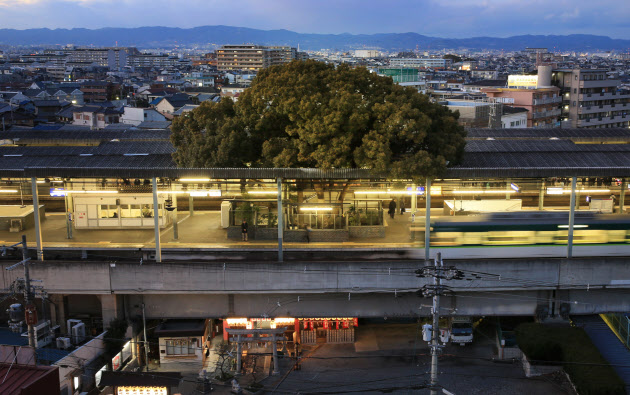
a 700-year old camphor tree pokes its head out of Kayashima Station (photo by Kosaku Mimura/Nikkei)
In the Northeast suburbs of central Osaka stands a curious train station unlike any other. Kayashima Station features a rectangular hole cut into the roof of the elevated platform and, from inside, a giant tree pokes its head out like a stalk of broccoli. It’s almost like a railway version of Laputa.
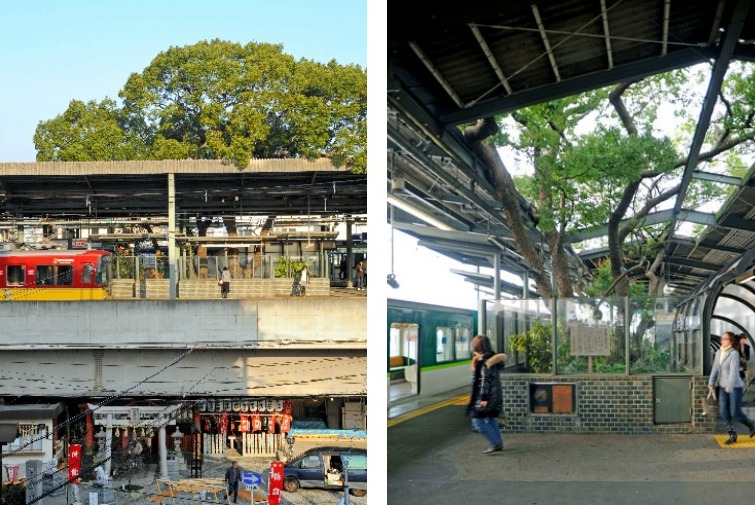
Photos by Mizuo Watanabe/Asahi
The large camphor tree is older than most records but officials believe it to be around 700 years old. The story of how this tree and station became, quite literally, intertwined, varies depending on who you ask. It certainly has to do with a great reverence for nature, but also a fair amount of superstition.
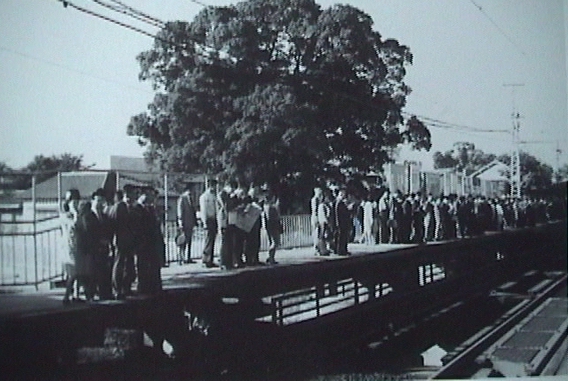
Kayashima Station in 1968, 4 years before plans to cut it down (photo via “me de miru neyagawashi no hyakunen)
Kayashima Station first opened in 1910 and, at the time, the camphor tree stood right next to the station. For the next 60 years the station remained largely unchanged. But an increase in population and overcrowding began to put pressure on the station and plans for an expansion where approved in 1972, which called for the tree to be cut down.
But the camphor tree had long been associated with a local shrine and deity. And when locals found out that station officials planned to remove the tree there was a large uproar. Tales began to emerge about the tree being angry, and unfortunate events befalling anyone who attempted to cut it down. Someone who cut a branch off later in the day developed a high fever. A white snake was spotted, wrapped around the tree. Some even saw smoke arise from the tree (it was probably just a swarm of bugs).
And so the station officials eventually agreed to keep the tree and incorporate it into the new elevated platform’s design. In 1973 construction began and the new station was completed in 1980. The station even surrounded the base of the tree with a small shrine. To this day, the tree still stands thanks to a strong, local community and a little bit of superstition.
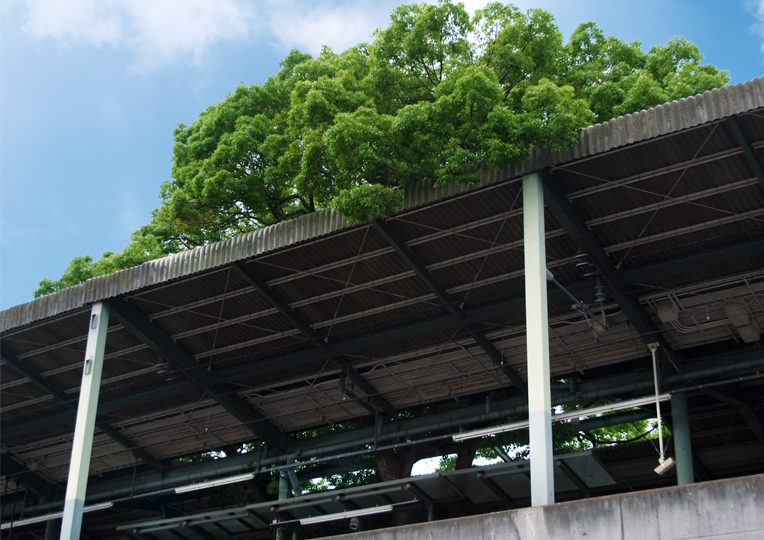
photo by Studio Ohana
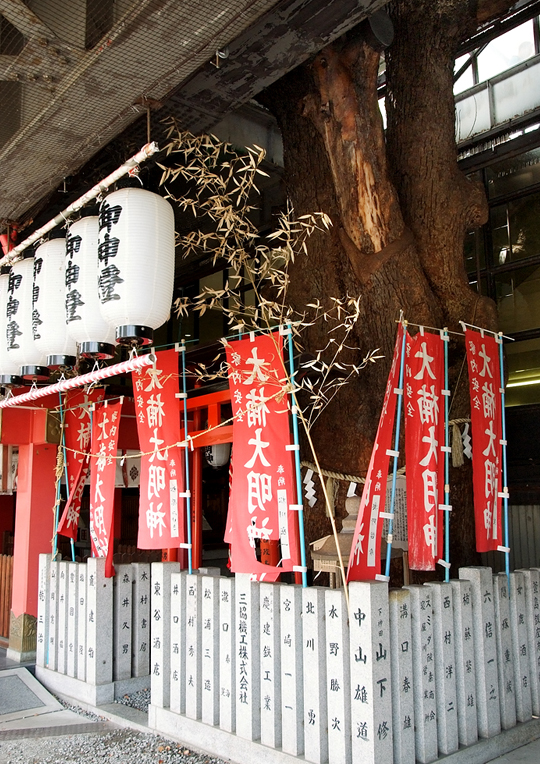
photo by Studio Ohana
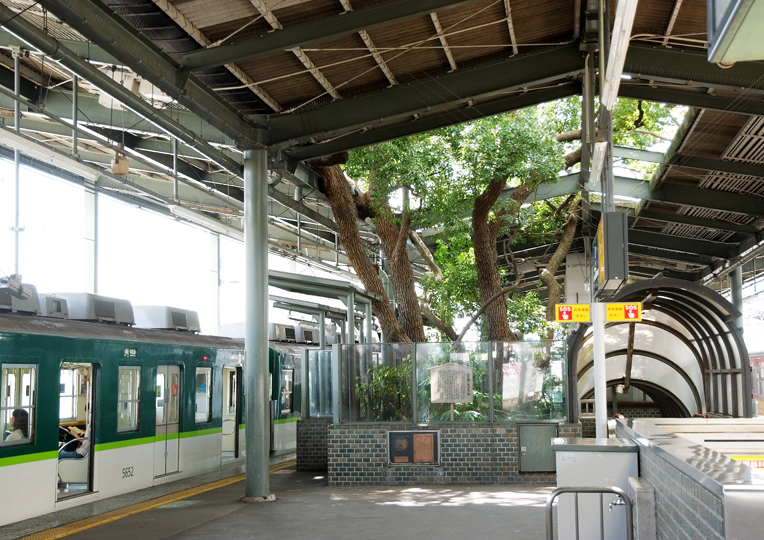
photo by Studio Ohana
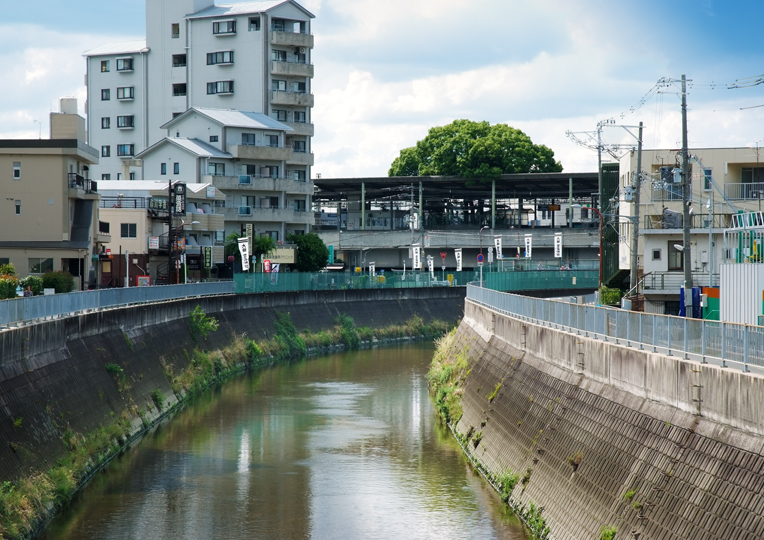
photo by Studio Ohana





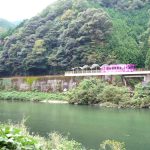


















February 11, 2017 at 11:18 am
This is an impeccable model that should be followed by other civilizations.
That said, not to rain on anybody’s parade, but as an American expat living in Japan, I have been struck by how little the typical Japanese person actually cares about flora. Perhaps I have a skewed perspective living in Setagaya, but the temple next door hires a gardener to artistically cut off every single leaf from each tree each years over a one week period, leaving bare trunks. A large leafy weed growing on the main thoroughfare is sliced to smithereens by a proud, hedge trimming wielding citizen each season. My next door neighbor’s wife was taking a chainsaw to all of the beautiful trees in her yard one summer, and when I summoned up the courage to confront her with a flabbergasted, “ki wa okirai desu ka?” she looked dumbfounded, put down her sap-soaked saw, and retreated inside, trees still flourishing to this day. Essentially, the modern Tokyo-ite reveres cleanliness, in the form of no foliage in site, yet dot their concrete paradise with trinkets.
Sure, this train station is cool. But it doesn’t reflect the concrete-clad reality of a country that is the antithesis of animism (no matter what they claim).
February 18, 2017 at 10:01 pm
It’s a cool idea, I’ve seen a number of houses that also have trees growing through the middle of them. It’s awesome fun working on them as an Agriculturalist.